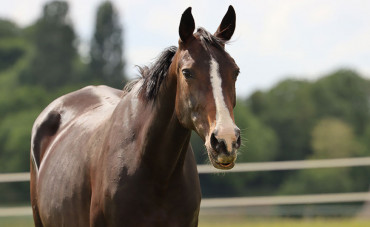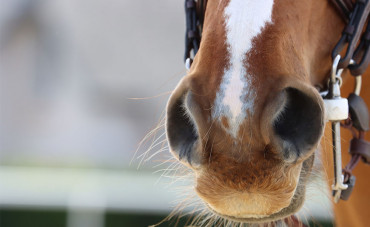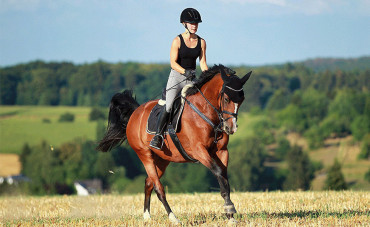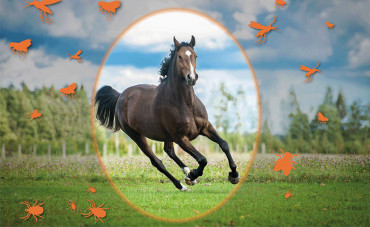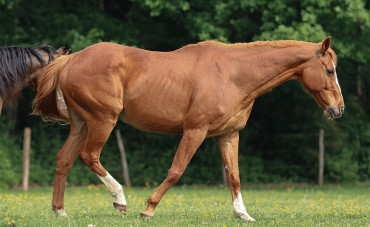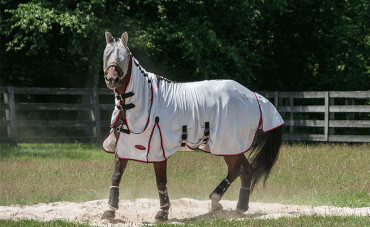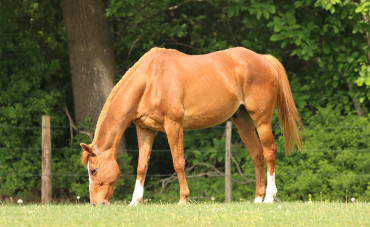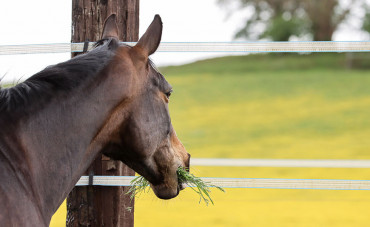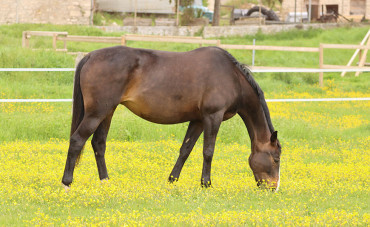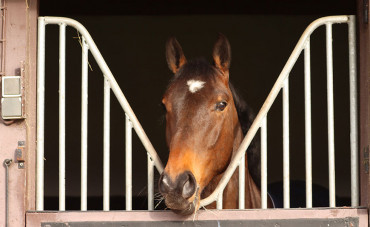With the arrival of summer, it’s time to make the most of the warm weather by giving your horse time in the field, carrying out schooling sessions in the outdoor arena and head out on hacks rather than remaining cooped up in the riding arena or stable. Here are a few tips to get summer off to a good start:
Tip 1
Adapt your activities
The arrival of summer means the chance to take full advantage of the great outdoors. However, a few precautions must be taken:
- Avoid going out alone—it’s better to head out with a group and ensure that you have a means of communication.
- During rides or when turning your horse out, try to eliminate any risks such as rough ground or areas with barbed wire or brambles, etc.
- Take water and, for long outings, identify water points so that your horse can also stay hydrated.
- Adapt the intensity of your horse’s activity to the temperature. Try to avoid working during the hottest hours of the day, like the early afternoon.
Tip 2
Manage insects
Good weather also means the presence of insects. Not only can they be very annoying for your horse, who will try to shake them off all day long, they can also transmit certain diseases. Don’t hesitate to protect your horse as much as possible against insects by opting to head out when insects are least active. Avoid the end of the day, when mosquitoes are most active.
Tip 3
Avoid dust
Hot and dry weather increases dust in the pasture, in the arena, on forest paths and even in stables. Ideally, we should avoid dusty environments as much as possible to protect your horse’s breathing and lungs. An environment with too much dust and pollen can lead to the development of respiratory allergies like emphysema or equine asthma. As such, you should avoid areas where dust is easily suspended in the air, such as an unwatered arena or a very dry path. At this time of the year, horses will have easier access to grass and will therefore eat hay less frequently. However, wetting the hay will make it possible to limit the dust that may accumulate with storage. We can also offer dust-sensitive horses food supplements to support their breathing, such as Balsamic control.
Tip 4
Protect against heat and the sun
It’s important not to overlook the impact of increased sunshine. If your horse lives outside, it’s vital that it can take shade under trees or in a shelter to protect itself from the sun. Similarly, on the hottest days, creating air currents in stables and using the shower can help lower your horse’s temperature, while also reducing dust to support your horse’s lungs, by renewing the air. However, if your horse must work in high temperatures, you can apply a wet terry cloth to the neck and skull. Permanent access to water is also essential, even when horses are out in the field for just a few hours.
Tip 5
Take care of your horse’s feet and prevent laminitis
Drier weather and the presence of dust will dry the horn of your horse’s feet. Your horse’s feet may become more fragile, particularly if you head outdoors more frequently. It’s also important to consider the risks of laminitis. Put simply, if your horse eats a diet that is too high in sugar, because it only eats grass, together with reduced physical activity, it may develop foot inflammation, also known as laminitis. To limit foot problems, regular foot maintenance (farriery, hoof grease, etc.) and avoiding feeding an overly rich diet are essential practices.
We hope you’ve found these 5 tips useful and help you get summer off to a good start with your horse. Have a great summer!

